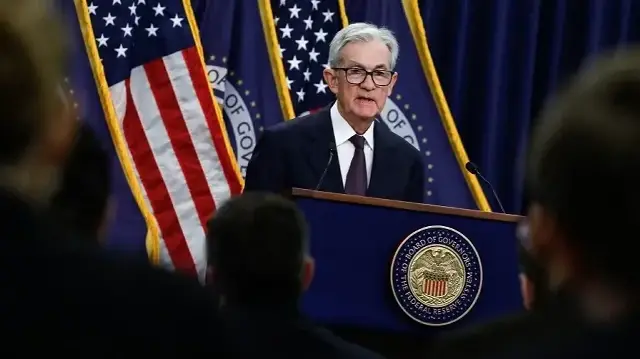Federal Reserve cuts interest rates for second time in 2025

The US Federal Reserve has lowered its benchmark interest rate by 25 basis points to a target range of 3.75%-4%, citing increased downside risks to employment. The decision follows recent weak employment data and ongoing inflation concerns.
The United States Federal Reserve has implemented its second interest rate reduction of 2025, lowering the benchmark federal funds rate by 25 basis points to a target range between 3.75% and 4%. This monetary policy adjustment follows the central bank's initial cut in September after maintaining rates unchanged through five previous policy meetings, reflecting evolving economic conditions and employment concerns.
Economic Assessment and Policy Rationale
The Federal Open Market Committee acknowledged that economic activity continues expanding at a moderate pace but noted concerning labor market developments. "Job gains have slowed this year, and the unemployment rate has edged up but remained low through August," the central bank stated, while observing that inflation has increased since earlier in the year and remains "somewhat elevated." The committee emphasized that "downside risks to employment rose in recent months," influencing the decision to provide additional monetary support.
Employment and Inflation Context
The rate reduction follows several months of disappointing employment figures, including August's modest increase of just 22,000 non-farm payroll jobs and a September decline of 32,000 private sector positions. The unemployment rate has gradually increased to 4.3%, while recent Bureau of Labor Statistics revisions revealed approximately 911,000 fewer jobs created than initially reported during the twelve months ending March 2025. September's consumer price index showed 3% annual inflation with 0.3% monthly increase, both below expectations.
Political Pressure and Institutional Dynamics
The Fed's decision occurs amid sustained public criticism from President Donald Trump, who has repeatedly demanded more aggressive rate reductions and attempted to influence central bank governance. The president's August effort to remove Fed Governor Lisa Cook was blocked by judicial intervention, reinforcing the central bank's operational independence despite executive branch pressure. The Fed maintained historically high rates at 5.5% from July 2023 through September 2024 before beginning its current easing cycle.
Reklam yükleniyor...
Reklam yükleniyor...







Comments you share on our site are a valuable resource for other users. Please be respectful of different opinions and other users. Avoid using rude, aggressive, derogatory, or discriminatory language.